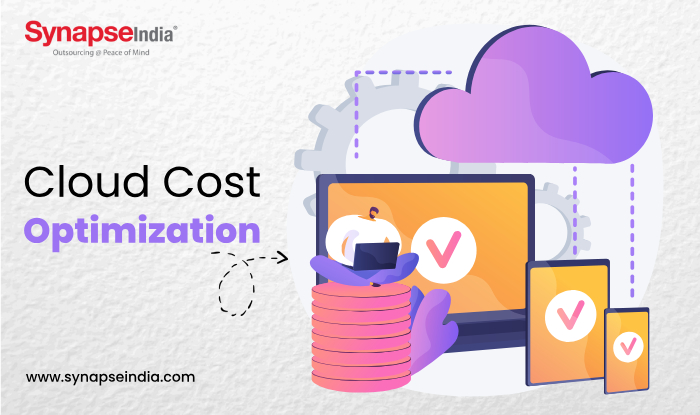 06 Jun 2024
06 Jun 2024
Businesses are spending more and more on cloud computing to run their operations in the current digital era. Although the cloud has many advantages, including flexibility and scalability, it also has costs that, if not handled well, can mount up quickly. For businesses to get the most out of their cloud investment and save costs, cloud cost optimization is crucial. We'll look at the best ways to reduce your cloud subscription and efficiently optimize expenses in this blog.

Managing and lowering the costs related to using cloud computing services is known as "cloud cost optimization." Businesses are faced with the difficulty of managing and optimizing their cloud spending as they shift more and more of their operations to the cloud. The process of optimizing cloud costs is putting best practices and strategies into action to minimize expenses and optimize the value of cloud resources.
To maintain long-term financial efficiency and competitiveness, optimize cloud costs for organizations, manage cloud expenditures, and optimize return on investment from cloud resources. Organizations may improve resource use and manage cloud budgets without sacrificing scalability or performance by implementing cost optimization measures.
Overprovisioning of resources is one of the biggest factors driving cloud expenses. Matching your cloud resources to your actual workload requirements is known as rightsizing. Evaluate your resource utilization regularly and make necessary adjustments to your cloud architecture. Without sacrificing performance, downsizing or scaling down inefficient or unused resources can result in significant cost savings.
In contrast to on-demand pricing, cloud service providers provide the option to buy Reserved Instances (RIs) for a set amount of time, usually one to three years, at a reduced cost. You may lock in cheaper costs for your cloud resources by making a reservation. To optimize the savings potential of RIs, examine your usage trends and pinpoint the resources with steady, predictable workloads.
Spot instances are surplus computer capacity that cloud operators sell at a substantial discount to on-demand instances. Spot instances are best suited for non-critical workloads or jobs that can be interrupted, however they are contingent on availability and can be quickly reclaimed by the provider. You can save a lot of money on development, testing, and batch-processing environments by using spot instances.
Your cloud infrastructure may automatically scale its resources to meet demand in real-time by using auto-scaling. You may maximize resource utilization and prevent over-provisioning by dynamically scaling resources up or down in response to workload variations. To guarantee optimum performance, configure Auto Scaling policies based on performance parameters like CPU use or network traffic.
Your cloud bill's storage expenses may make up a sizable amount, particularly if you're keeping a lot of data. Audit your storage consumption regularly and look for ways to maximize your storage capacity. Put data lifecycle management policies into place to have out-of-date or rarely viewed data automatically archived or deleted. To match storage expenses to your data access needs, use storage classes with varying performance and pricing tiers.

Platforms for serverless computing, like AWS Lambda and Azure Functions, let you run code without having to provision or manage servers. Comparing serverless architectures to traditional server-based models, you save money because you only pay for the compute resources used while your functions are being executed.
Your total cost of cloud computing may be greatly increased by data transfer fees, which are incurred when transferring data between various cloud ecosystem areas or services. Reduce the cost of data transport by concentrating your resources in areas with cheaper rates or, if practical, by combining data from different regions. To maximize performance and minimize the amount of data carried over the internet, use content delivery networks (CDNs) and caching.
To manage your cloud infrastructure and maximize the return on investment (ROI) from your cloud resources, cloud cost optimization is essential. Businesses can find ways to save costs, maximize resource use, and save money on cloud computing without sacrificing scalability or speed by putting the best practices discussed in this blog into practice. Proactively monitor and enhance your cloud infrastructure to guarantee sustained financial effectiveness and competitiveness in the current digital terrain.

